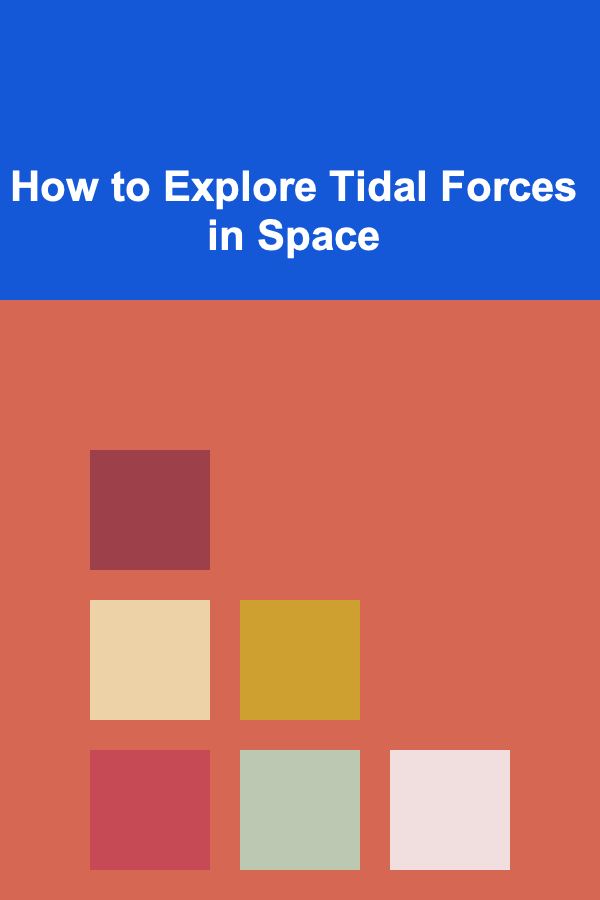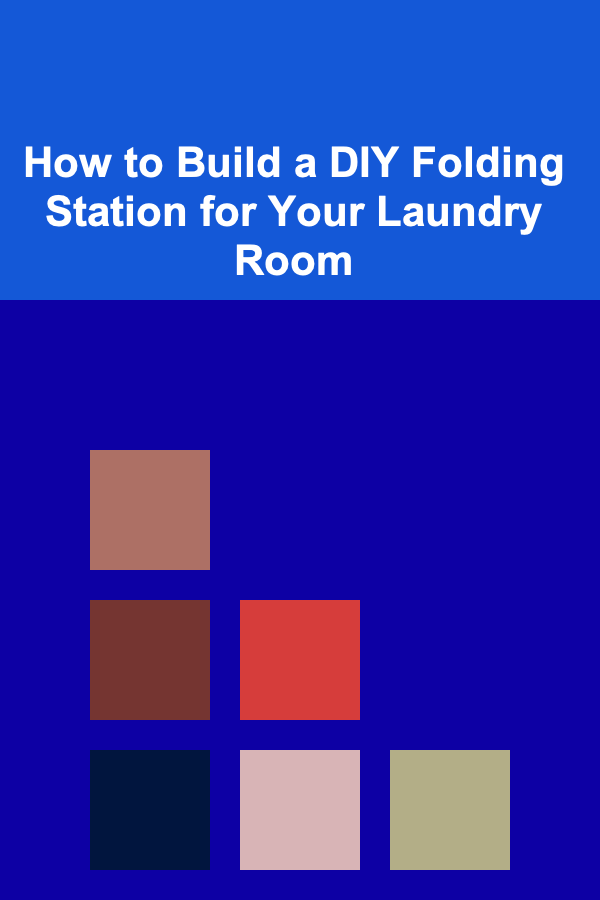
How to Explore Tidal Forces in Space
ebook include PDF & Audio bundle (Micro Guide)
$12.99$7.99
Limited Time Offer! Order within the next:

Tidal forces, the gravitational interaction between celestial bodies, are one of the most fascinating phenomena in the universe. Whether it's the dramatic effect the Moon has on Earth's oceans or the extreme stretching of a star as it nears a black hole, tidal forces influence everything from the formation of planetary systems to the behavior of distant galaxies. In space exploration, understanding tidal forces is crucial not only for gaining insights into the dynamics of celestial bodies but also for ensuring the safety and efficiency of space missions. This article delves deep into tidal forces, how they can be explored in space, and why they are essential for advancing our understanding of the cosmos.
Understanding Tidal Forces
What Are Tidal Forces?
Tidal forces arise from the gravitational interaction between two or more bodies. When a massive object, such as a planet or a moon, exerts gravitational pull on a smaller body, the gravitational force varies across the smaller object. The side of the object closest to the larger body experiences a stronger gravitational pull than the far side. This difference in gravitational forces stretches the smaller body, creating tidal effects.
On Earth, we experience tides due to the Moon's gravitational pull. The water in Earth's oceans is slightly deformed by this force, causing high and low tides. In space, these forces can be much more extreme, especially in systems involving massive celestial bodies like stars, black holes, and neutron stars.
How Tidal Forces Impact Celestial Bodies
Tidal forces can lead to several different effects depending on the size, distance, and nature of the interacting bodies. These effects include:
- Tidal Locking: A phenomenon where a body's rotation period synchronizes with its orbit around another body, resulting in one side of the body always facing the larger body. This is seen with Earth's Moon, which always shows the same face toward Earth.
- Orbital Decay: When tidal forces are strong enough, they can cause the orbit of one body to gradually decay. This can lead to the two bodies eventually colliding or merging, as seen in the case of some binary star systems or the eventual fate of the Moon's orbit around Earth.
- Tidal Heating: Tidal forces can cause internal friction within a body, leading to the generation of heat. This is evident on Jupiter's moon Io, where tidal forces from Jupiter and its other moons generate intense volcanic activity due to internal heating.
- Roche Limit: This is the distance at which the tidal forces exerted by a larger body become strong enough to break apart a smaller body held together by its gravity. This is why many moons of planets are located outside the Roche limit---any closer and they would be torn apart by tidal forces.
Methods to Explore Tidal Forces in Space
1. Observations of Planetary and Satellite Systems
Exploring tidal forces in space begins with observing systems where these forces are clearly present. Planetary and satellite systems are prime candidates, as tidal interactions are often the dominant factor influencing their behavior.
Studying Moons and Their Parent Planets
The study of moons in orbit around planets offers many opportunities to explore tidal forces. For example, Io's volcanic activity due to tidal heating, or the case of Pluto and its moon Charon, which are tidally locked, provide clues about the effects of tidal forces. Space missions to Jupiter's moon Europa, Saturn's moon Titan, and Neptune's moon Triton aim to further explore how tidal forces influence the geologic and atmospheric activity of these moons. Observations of tidal effects can provide information about the interior structure of these moons, their potential habitability, and their geological history.
Tidal interactions between moons and their planets can be studied in a variety of ways:
- Gravitational Mapping: Using precise measurements of gravitational forces through spacecraft flybys or orbits, scientists can detect small variations in gravitational pull caused by tidal deformations. This can provide information on the internal composition of moons.
- Magnetic Field Data: Space missions that measure the magnetic fields of celestial bodies can reveal how tidal forces impact the interior structure of planets and moons. For example, the presence of a subsurface ocean on Europa was inferred from its magnetic field, suggesting tidal forces at work beneath the icy crust.
Tidal Forces on Exoplanets
The discovery of exoplanets, particularly those in the habitable zone of other stars, has opened new avenues for studying tidal forces in space. Many of these planets are likely tidally locked to their parent stars, with one hemisphere constantly exposed to sunlight and the other in eternal darkness. Studying the effects of tidal locking on exoplanets, including how it affects atmospheric dynamics and potential habitability, can offer insights into how similar forces may have shaped our own planet's history.
Space telescopes like the James Webb Space Telescope (JWST) and ground-based observatories can observe exoplanets and provide data on their atmospheric composition and physical characteristics, allowing researchers to detect potential tidal locking or tidal heating in distant planetary systems.
2. Spacecraft Missions to Investigate Tidal Forces
Sending spacecraft to observe tidal forces firsthand is one of the most direct ways to study this phenomenon. Space missions that target celestial bodies with known tidal interactions are crucial for advancing our understanding.
The Europa Clipper Mission
One of NASA's most anticipated missions to study tidal forces is the Europa Clipper mission, which is set to launch in the 2020s. Europa, one of Jupiter's moons, is believed to have a subsurface ocean beneath its icy crust, and tidal forces from Jupiter and its other moons may generate enough heat to keep this ocean liquid. The Europa Clipper mission will conduct detailed reconnaissance of Europa's surface and subsurface, providing key data on how tidal forces influence its potential habitability and geological activity.
Observing Tidal Heating with the Juno Mission
NASA's Juno mission, currently orbiting Jupiter, is also studying the impact of tidal forces. By observing the dynamics of Jupiter's moons and the planet's magnetic field, Juno is helping scientists understand how tidal forces within the Jupiter system influence the planet's atmosphere and internal structure. The data obtained can also shed light on how tidal forces contribute to the evolution of the system and how they might affect other planetary systems.
3. Gravitational Wave Astronomy
Gravitational waves---ripples in spacetime caused by the acceleration of massive objects---are another way to explore tidal forces in space. The collision and merger of compact objects like black holes and neutron stars produce gravitational waves, and the way these waves propagate through space carries detailed information about the tidal interactions between the merging objects.
LIGO and Virgo Detectors
The Laser Interferometer Gravitational-Wave Observatory (LIGO) and the Virgo collaboration have made groundbreaking detections of gravitational waves, particularly from binary black hole mergers. These events are often accompanied by significant tidal forces that stretch and deform the objects involved. By analyzing the characteristics of these waves, scientists can infer the effects of tidal forces on the objects involved in the merger. This helps to further our understanding of the strong-field regime of general relativity.
Future Gravitational Wave Missions
The planned space-based gravitational wave observatory, LISA (Laser Interferometer Space Antenna), aims to observe lower-frequency gravitational waves. LISA will be able to detect the tidal interactions of supermassive black holes and other large-scale phenomena that are difficult to observe with Earth-based detectors. These observations will significantly enhance our understanding of tidal forces in extreme environments.
4. Theoretical Models and Simulations
In addition to observational and experimental methods, theoretical models and computer simulations play a crucial role in exploring tidal forces in space. By modeling the dynamics of celestial systems, scientists can predict the behavior of bodies under tidal stress and investigate the complex interactions that lead to tidal locking, orbital decay, and tidal heating.
N-body Simulations
N-body simulations involve the modeling of gravitational interactions between multiple objects. These simulations can predict the long-term effects of tidal forces in star systems, planetary systems, and binary star systems. By simulating the tidal interactions between bodies over millions or even billions of years, researchers can better understand the evolution of these systems and the role that tidal forces play in their development.
Hydrodynamic Simulations
For moons and planets with oceans or atmospheres, hydrodynamic simulations can model the effect of tidal forces on the planet's surface and interior. For example, scientists can simulate how tidal forces generate heat within the interior of a planet or moon, or how they affect the movement of ocean currents or atmospheric circulation.
5. Studying Extreme Tidal Forces Near Black Holes
One of the most extreme examples of tidal forces occurs near black holes. As matter approaches a black hole, the tidal forces become so intense that they stretch and tear apart any object in its path---a phenomenon known as spaghettification. Observing these extreme tidal forces can provide valuable insights into the nature of black holes and the behavior of matter in extreme gravitational fields.
X-ray Observations
Black holes often emit powerful X-rays when they accrete matter from a companion star or surrounding disk. These X-rays can be observed by space telescopes such as the Chandra X-ray Observatory or the XMM-Newton satellite. By studying the X-ray emissions and the dynamics of matter near black holes, scientists can gain insights into the tidal forces at play in these extreme environments.
Gravitational Lensing
Gravitational lensing, where the light from a distant object is bent by the gravity of a black hole, also provides valuable information about tidal forces. By studying the distorted images of distant stars or galaxies behind black holes, scientists can understand how extreme gravitational forces shape the paths of light and the spacetime fabric around these objects.
Conclusion
Tidal forces are a fundamental aspect of the universe, affecting everything from the orbits of moons to the behavior of black holes. Exploring these forces in space is not only essential for understanding the dynamics of celestial systems but also for advancing our knowledge of physics, astronomy, and cosmology. Through a combination of observations, space missions, gravitational wave astronomy, and theoretical modeling, scientists are unraveling the mysteries of tidal forces and their profound impact on the universe. As technology and our understanding of space continue to evolve, we can look forward to even more exciting discoveries that shed light on the role of tidal forces in shaping the cosmos.

How to Build a DIY Folding Station for Your Laundry Room
Read More
How to Build a Profitable Freelance Career
Read More
How to Combine Debt Reduction and Budgeting with the Best Debt and Budget App
Read More
How to Write a Strong Lease Agreement for Your Rental Property
Read More
How to Introduce Basic Engineering Through Play
Read More
Blockchain for Intellectual Property Rights Protection: A Comprehensive Guide
Read MoreOther Products

How to Build a DIY Folding Station for Your Laundry Room
Read More
How to Build a Profitable Freelance Career
Read More
How to Combine Debt Reduction and Budgeting with the Best Debt and Budget App
Read More
How to Write a Strong Lease Agreement for Your Rental Property
Read More
How to Introduce Basic Engineering Through Play
Read More